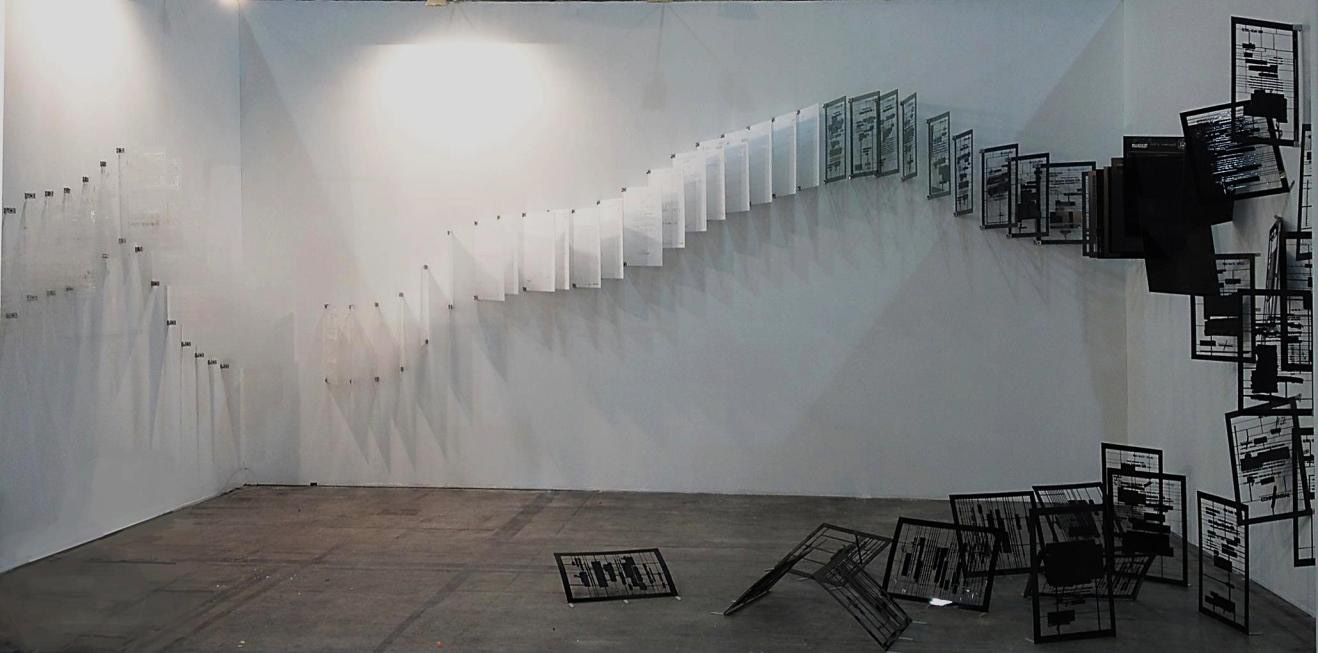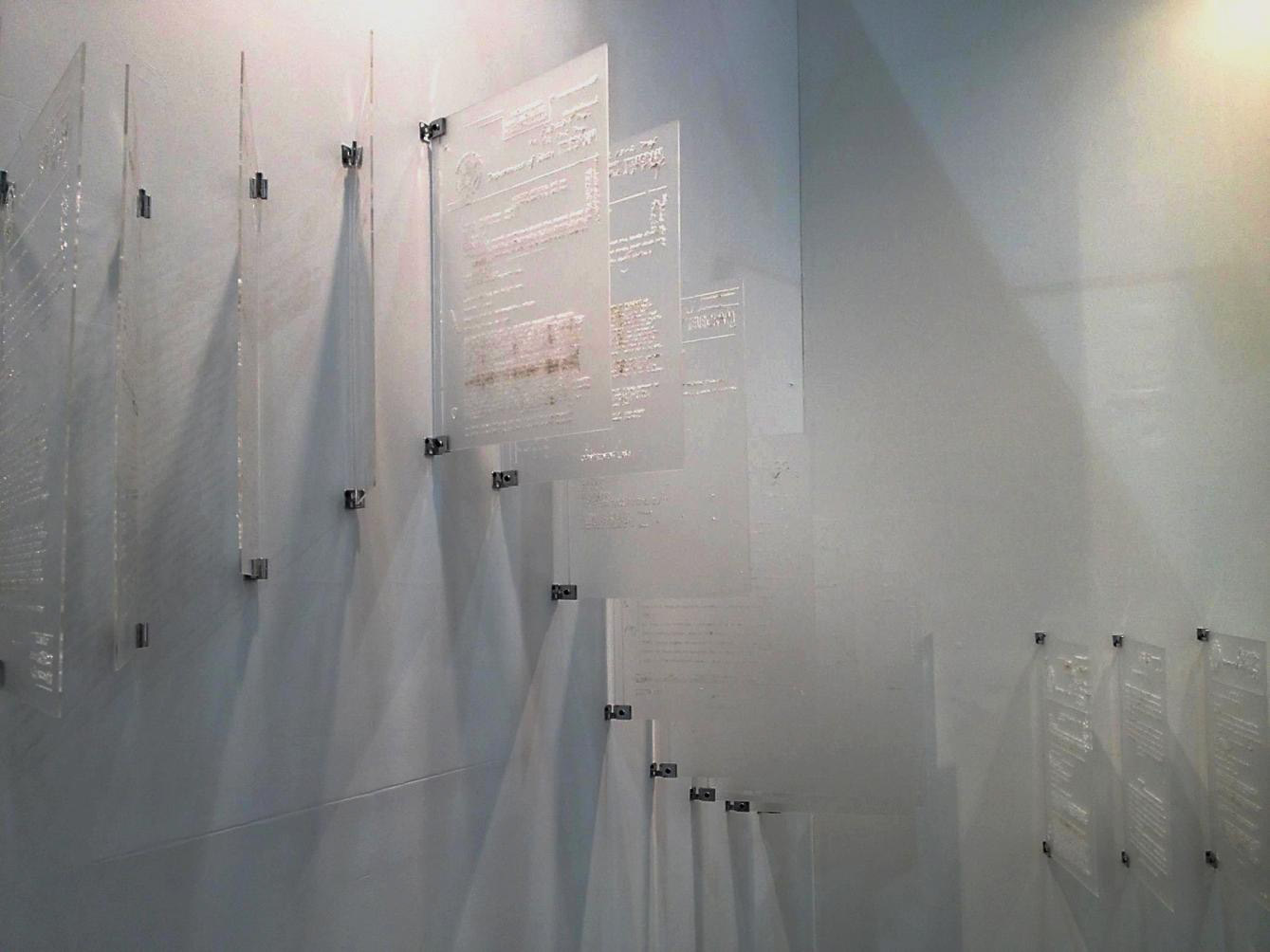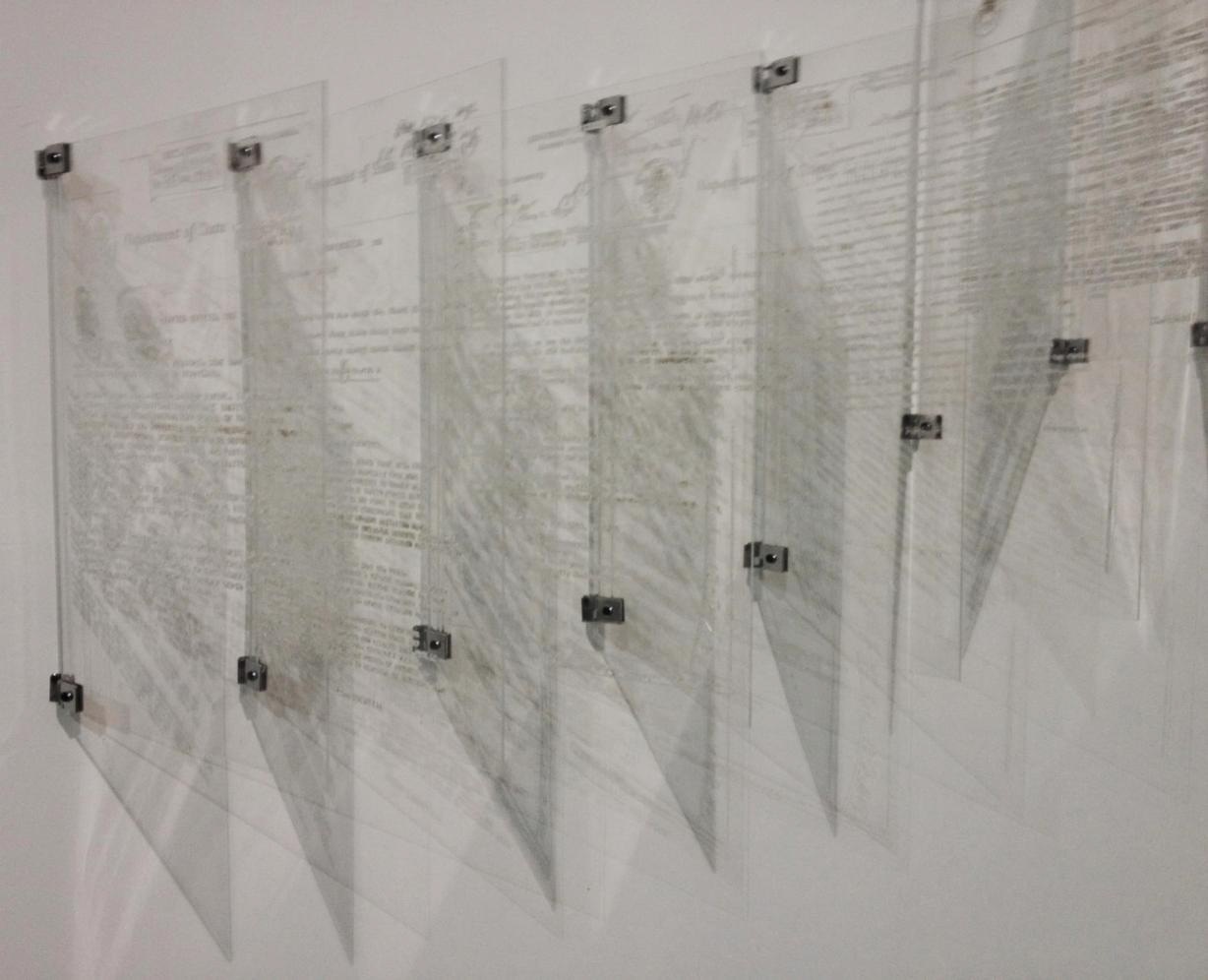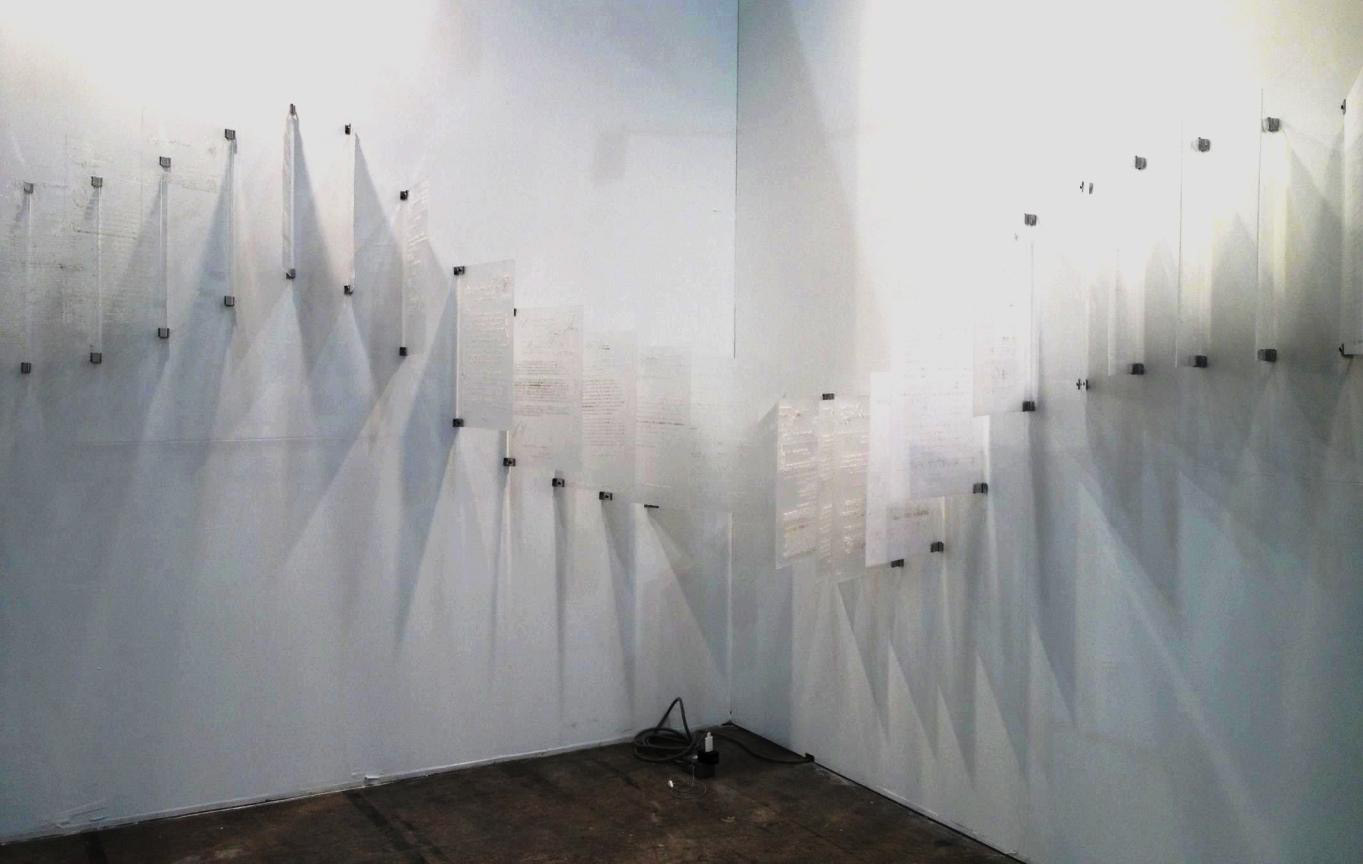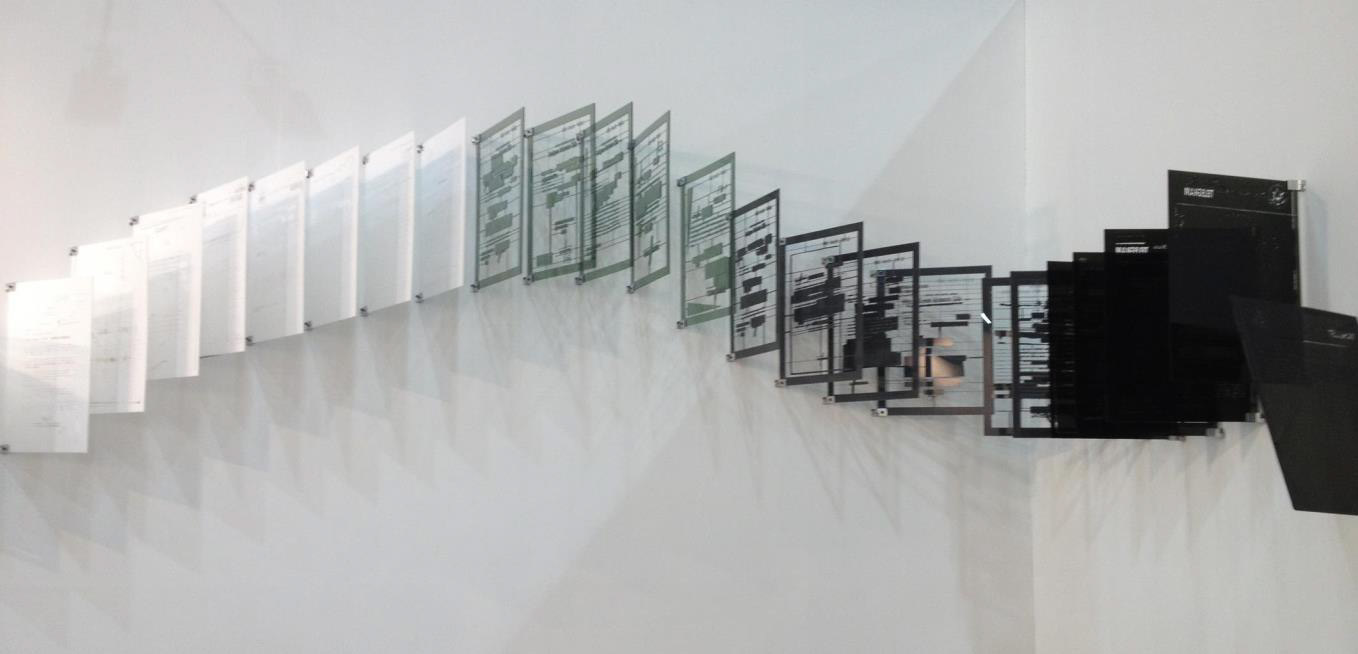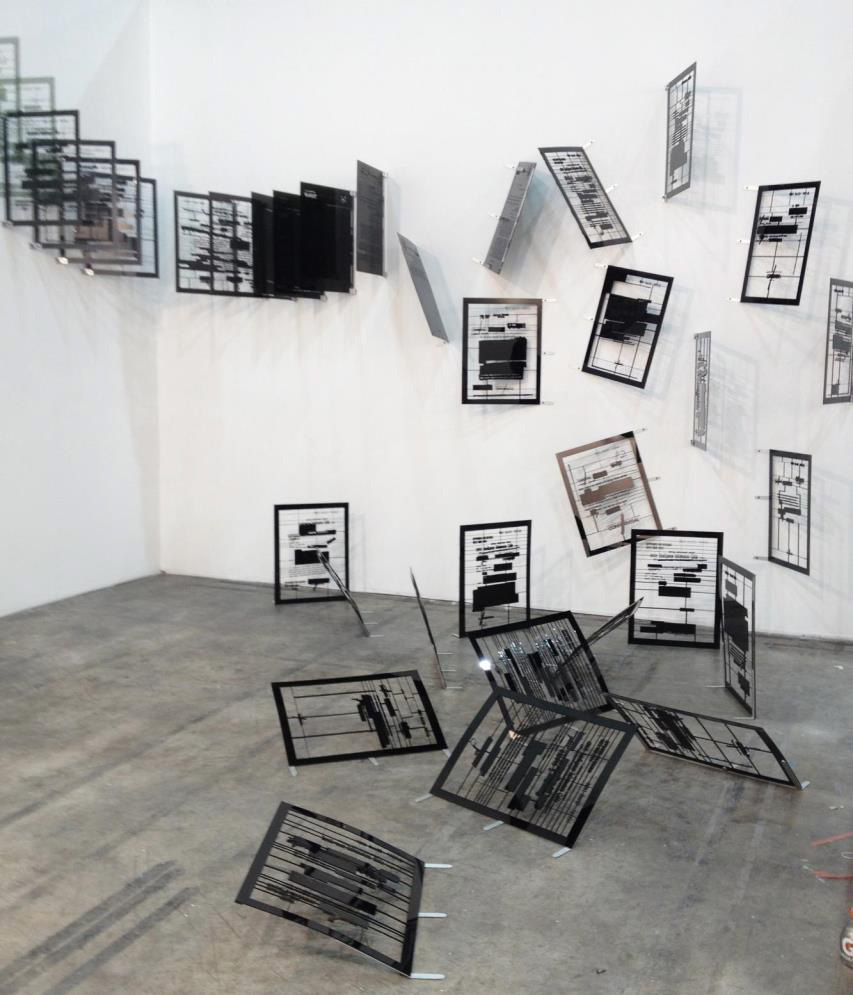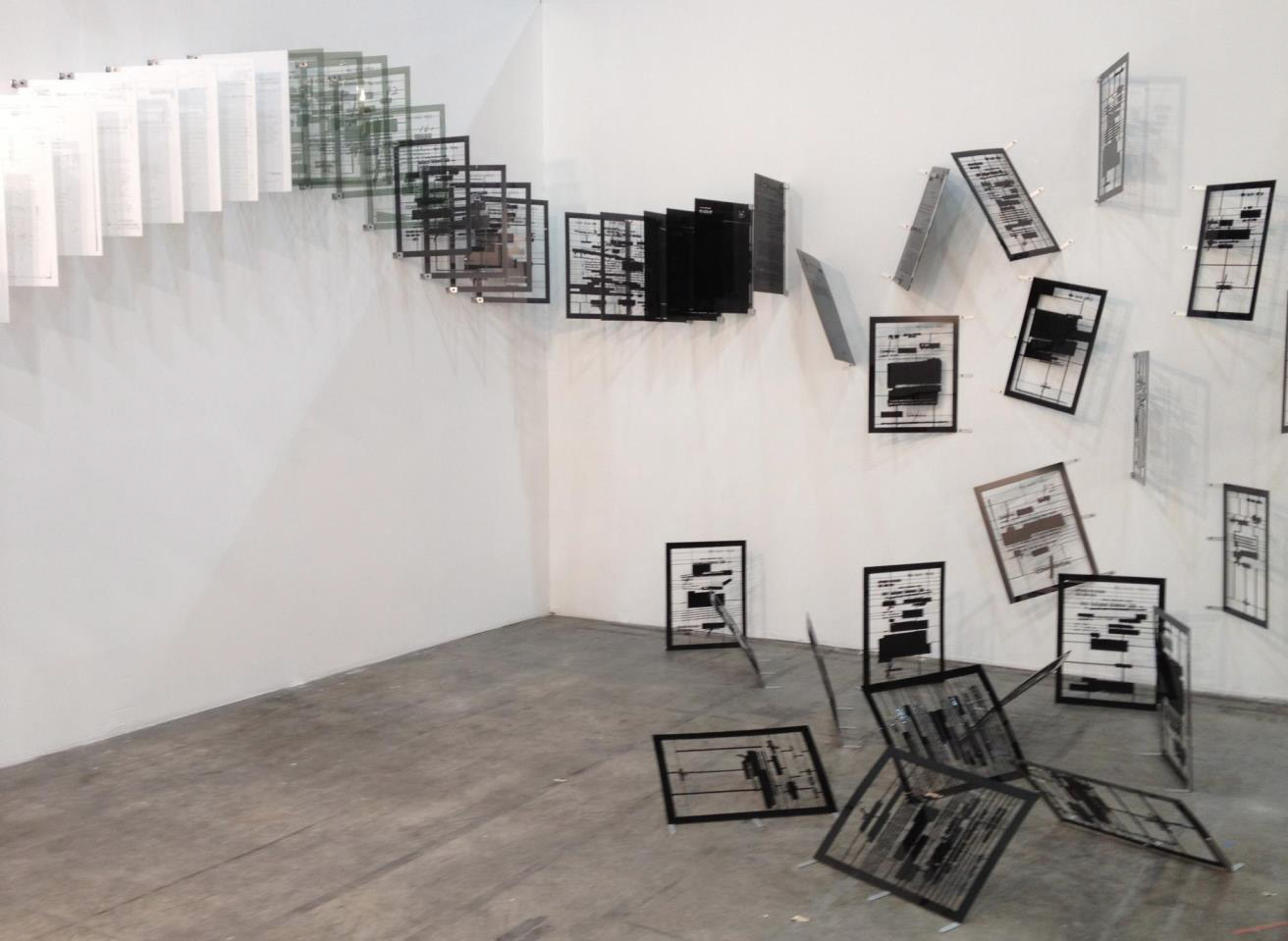
LITEMPO
1 Philip Agee blew the whistle on CIA skulduggery in the 1970’s. He is the reason why Valerie Plame’s outing became an issue. Three Mexican Presidents were CIA. Philip Agee in his book CIA DIARY laid it all bare.
2 Morley, Jefferson LITEMPO: The CIA’s Eyes on Tlatelolco. (Washingtonpost.com columnist and author of a biography of former CIA station chief in Mexico City, Win Scott, 2008).
3 Id Ibid.
The piece is an installation that works with documents from different U.S. intelligence agencies, referring to Mexico, and declassified by the U.S. between 1998-2003. These documents refer -through a cover name- to the Mexican “agents” recruited by the head of CIA operations in Mexico named Winston Scott, who between 1956 and 1969, “recruited a total of 12 agents at the highest levels of the Mexican government. His ‘informers’ included two former presidents of Mexico 1, and two men who were later prosecuted for war crimes.”
The CIA’s codename for the spy ring was LITEMPO. The letters LI stood for the Agency’s code for operations in Mexico; TEMPO was the term given to a program that, in the words of a secret Agency history, was “a productive and effective relationship between the CIA and a select group of senior officials in Mexico“ 2.. Initiated in 1960, LITEMPO served as “an off-the-record channel for the exchange of select and sensitive political information that each government wished to obtain, one from the other, but not through public protocol exchanges.
In CIA files, Scott’s agents were identified by specific numbers. LITEMPO-1, for example, was a man named Emilio Bolaños, nephew of Gustavo Diaz Ordaz, secretary of the Interior and president in the 1960s. Díaz Ordaz was LITEMPO-2, and so on, a number was assigned to each LITEMPO member. LITEMPO “informants” were paid by the agency which, in some reports, was considered excessive in the opinion of a senior CIA official 3.
The documents that make up the installation refer to the events before and after October 2, 1968, date of the Massacre of students in the Plaza de las Tres Culturas, known as the Tlatelolco Massacre, still under investigation and with legal proceedings still pending, whose death toll has not been determined, since the bodies were disappeared. LITEMPO is a metaphor for the political machinations of the Latin American elites and North American interests that are kept in secret and impunity.
From left to right, the acrylic files are ordered from the most text to the most censorship redactions, in a sort of domino effect. Materially it also means a degradation of what is cut: the cut letter begins, i.e., the result that remains is the blank paper emptied of letters. This is changing towards the center, and already in the redaction the white is eliminated and what remains is the letter and the redaction.
The visual and material qualities of the acrylics change in the following order: transparent acrylic, powdered acrylic, glossy translucent white acrylic, opaque white, transparent gray (cold fumé), opaque gray and opaque black.
exhibición:
INTERNATIONAL CONTEMPORARY ART FAIR
ciudad:
país:
Especificación:
- LITEMPO
Installation
76 pieces of laser-cut acrylic, arranged on the wall and floor
